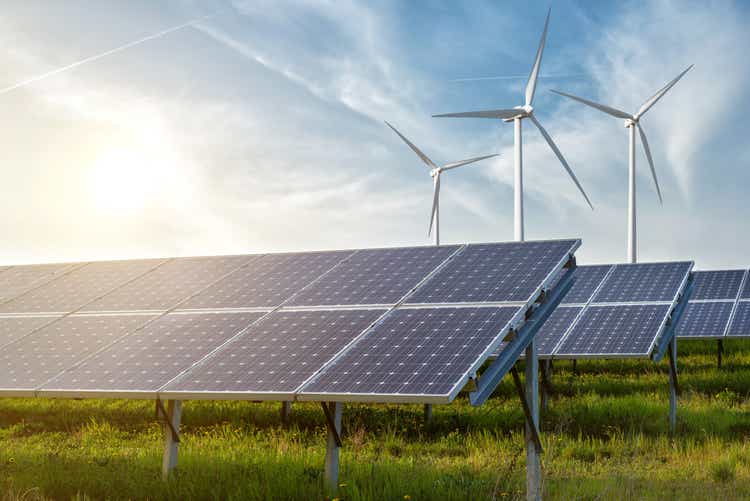artJazz
Given the strong price environment for oil and natural gas in 2022, midstream’s clean energy initiatives have felt more like an afterthought for investors this year, but energy infrastructure companies continue to make strides in this area, announcing new partnerships, projects, and acquisitions. For opportunities in the US, the incentives in the Inflation Reduction Act (IRA) may help advance contemplated projects or sweeten the economics for projects already under development. Today’s note discusses how midstream can stand to benefit from elements of the IRA and a few tangible examples of how companies are actively investing in alternative energy today based on recent announcements.
Inflation Reduction Act can benefit midstream
From renewable fuels to carbon capture to hydrogen, the provisions in the IRA support clean energy initiatives that can benefit midstream companies. Energy infrastructure companies are storing, blending, and transporting biodiesel and other renewable fuels today. In some cases, companies are also handling the feedstocks used to make these products. More renewable fuel production capacity is coming as select US refineries are converted, but to the extent that the IRA incentivizes more clean fuel production, that could drive more volumes for midstream companies to handle. Energy infrastructure companies are also looking at opportunities related to hydrogen. For example, Williams (WMB) partnered with Ørsted (OTCPK:DNNGY) (OTCPK:DOGEF) last year to leverage their respective expertise for hydrogen opportunities in the US. A new clean hydrogen production tax credit in the IRA could support more development work for this earlier-stage energy technology.
Carbon capture – a near-term opportunity that can leverage existing assets
The provisions for carbon capture included in the IRA are particularly notable given several collaborations between midstream and other companies focused on carbon capture, utilization, and storage or CCUS (see table). Specifically, the increase to 45Q credits and direct pay option for the first five years may make contemplated carbon capture projects more economically viable. While many of these partnerships are in early days with limited details, EnLink (ENLC) has two notable CCUS agreements. In June 2022, ENLC and BKV Corporation reached a Phase 1 Final Investment Decision for a CCUS project in the Barnett Shale before the IRA was even passed. ENLC will transport BKV’s produced natural gas to ENLC’s processing facility, where the CO2 will be separated and then permanently sequestered in a BKV injection well. Last week, ENLC announced a transportation service agreement with Exxon Mobil (XOM) to deliver CO2 to XOM’s storage site in Louisiana using a mix of existing pipelines and new assets starting in 2025. ENLC has highlighted the unique advantages of repurposing its existing natural gas pipelines to transport carbon dioxide (read more). The ability to leverage existing infrastructure for CCUS or other initiatives is an advantage for midstream.

Midstream companies in the US and Canada are actively investing in alternative energy today
Companies are not just looking at opportunities on drawing boards but are actively allocating capital towards clean energy through direct investments and M&A activity. Kinder Morgan (KMI) has built a portfolio of renewable natural gas (RNG) production facilities through a series of acquisitions, including most recently North American Natural Resources for $135 million. Across its RNG assets, KMI expects to eventually produce 7.7 billion cubic feet (Bcf) of RNG annually. With its Corporate Venture Capital program, Williams has committed $40 million to early-stage companies focused on developing new energy technologies such as Aurora Hydrogen, which converts natural gas to hydrogen without emitting carbon dioxide.
Among North American energy infrastructure players, Canadian C-Corp Enbridge (ENB) stands out for an extensive alternative energy footprint. ENB has invested billions in renewable energy since 2002 and boasts a large portfolio of wind and solar projects spanning North America and Europe. Last month, ENB announced the acquisition of US renewable project developer Tri Global Energy for $270 million. Tri Global Energy has more than 7 GW of renewable generation capacity across its portfolio of wind and solar projects and arguably stands to benefit from the IRA. For its part, Canadian corporation TC Energy (TRP) recently announced the construction of its first solar power project in Alberta, representing a $146 million investment. TRP is also working with its partner Nikola (NKLA) on a potential hydrogen production hub in Alberta, which could be greenlighted by the end of 2023.
So what?
Many midstream companies are pursuing opportunities in clean energy solutions as they look to leverage their skillsets in an evolving energy landscape. The Inflation Reduction Act may serve as a catalyst for moving additional projects from an evaluation stage towards execution.
Disclosure: © Alerian 2022. All rights reserved. This material is reproduced with the prior consent of Alerian. It is provided as general information only and should not be taken as investment advice. Employees of Alerian are prohibited from owning individual MLPs. For more information on Alerian and to see our full disclaimer, visit Disclaimers | Alerian.


Be the first to comment